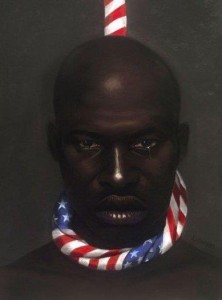SLAVERY




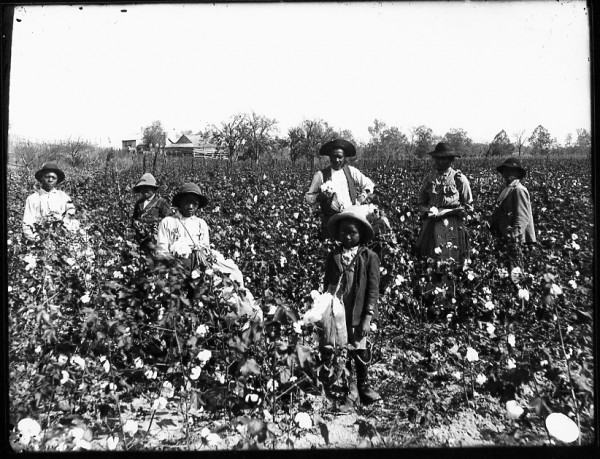
“The enslavement of African people in the Americas by the nations and peoples of Western Europe, created the economic engine that funded modern capitalism. Therefore it comes as no surprise that most of the major corporations that were founded by Western European and American merchants prior to roughly 100 years ago, benefited directly from slavery.”

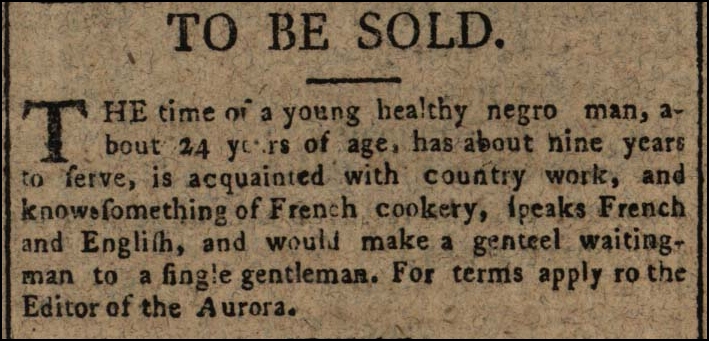

Photographed in 1863 – Peter, a man who was enslaved in Baton Rouge, Louisiana, whose scars are a result of a whipping by his overseer, was subsequently discharged by Peter’s owner. The pattern of scarring seen here is highly suggestive of keloid formation and not necessarily due to a particularly brutal flogging.

Slavery is a system under which people are treated as property to be bought and sold, and are forced to work.

The Tuskegee Institute records of lynchings between the years 1880 and 1951 show 3,437 African-American victims, as well as 1,293 white victims. Lynchings were concentrated in the Cotton Belt: (Mississippi, Georgia, Alabama, Texas, and Louisiana).





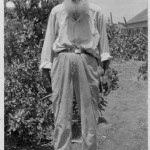








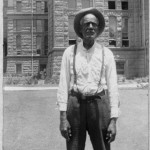




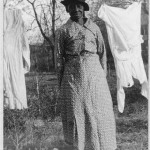 Slavery in the United States was a form of slave labor that existed as a legal institution in North America for more than a century before the founding of the United States in 1776. This continued mostly in the Southern United States until the passage of the Thirteenth Amendment to the United States Constitution. This happened in 1865 following the American Civil War. The first English colony in North America, Virginia, acquired its first Africans in 1619 after a ship arrived that carried a cargo of about 20 Africans.[2][3] The practice established in the Spanish colonies as early as the 1560s was expanded into English North America.[4]Most slaves were of African descent and were held by whites; in the English colonies, their status as foreigners and, generally, non-Christians contributed to hardening the legal boundaries of slavery. Over decades, many slaves in the Upper South were born of mixed race with white fathers; because of generations of white fathers, by the early nineteenth century, some mixed-race slaves would qualify as legally white under state laws.[5] Some Native Americans and free blacks also held African-descended slaves.[6] In 1662 the colony of Virginia passed a law adopting the principle of partus sequitur ventrem, by which children of a slave mother inherited her status. This was in contrast to English common law, in which children of subjects inherited the status of the father. Many mixed-race children were born into slavery because white men raped slave women, or in some cases had consensual relationships with them. Europeans also held some Native Americans as slaves, including some of the African descent. Slave labor was in demand in the areas where there was good-quality soil and climate for large plantations of high-value cash crops with labor-intensive cultivation, such as tobacco, cotton, sugar, and coffee. By the early decades of the 19th century, the overwhelming majority of slaveholders and slaves were in the southern United States. By the Civil War, most slaves were held in the Deep South, where they were engaged in a work-gang system of agriculture on large plantations; two-thirds worked on cotton. They were directed by a supervisory class called overseers, usually white men.Before the widespread establishment of chattel slavery (outright ownership of a human being, and of his/her descendants), much work was organized under a system of bonded labor known as indentured servitude. This typically lasted for several years for Europeans and Africans alike. People paid with their labor for the costs of transport to the colonies. They contracted for such arrangements because of poor economies in their home countries. Between 1680 and 1700, as fewer Europeans migrated to the colonies, planters began to import more Africans as slaves. Recognizing the importance of slavery, the House of Burgesses in Virginia enacted a new slave code in 1705; it brought together a variety of legislation and added new provisions that embedded the principles of white supremacy in the law. By the early 18th century, colonial courts and legislatures had racialized slavery, essentially creating a caste system in which slavery applied nearly exclusively to Black Africans and people of African descent, and occasionally to Native Americans.From the 16th to the 19th centuries, an estimated 12 million Africans were shipped as slaves to the Americas.(see Slavery in the Americas) Of these, an estimated 645,000 were brought to what is now the United States. By the 1860 United States Census, the slave population in the United States had grown to four million. Slaveholders and the commodities of the South had a strong influence on United States politics: “in the 72 years between the election of George Washington and the election of Abraham Lincoln, 50 of those years [had] a slaveholder as president of the United States, and, for that whole period of time, there was never a person elected to a second term who was not a slaveholder.” Slavery was a contentious issue in the politics of the United States from the 1770s through the 1860s, becoming a topic of debate in the drafting of the Constitution (with the slave trade protected for 20 years and slaves being counted toward Congressional apportionment); a subject of Federal legislation, such as the ban on the trans-Atlantic slave trade in 1808 and the passage of the Fugitive Slave Act of 1850; and a subject of landmark US Supreme Court cases, such as the Dred Scott decision of 1855.Slaves resisted the institution through rebellions and non-compliance and escaped it through travel to non-slave states and Canada, facilitated by the Underground Railroad. Advocates of abolitionism engaged in moral and political debates and encouraged the creation of Free Soil states as Western expansion proceeded. Slavery was a principal issue leading to the American Civil War. After the Union prevailed in the war, slavery was made illegal throughout the United States with the adoption of the Thirteenth Amendment to the United States Constitution.[14] A few instances of enslavement of Indians by other Indians persisted in the following years. In the South, practices of slavery shaped the institutions of convict leasing, sharecropping, and Jim Crow laws to enforce racial segregation, white supremacy, and legal disfranchisement that persisted into the mid-1960s.
Slavery in the United States was a form of slave labor that existed as a legal institution in North America for more than a century before the founding of the United States in 1776. This continued mostly in the Southern United States until the passage of the Thirteenth Amendment to the United States Constitution. This happened in 1865 following the American Civil War. The first English colony in North America, Virginia, acquired its first Africans in 1619 after a ship arrived that carried a cargo of about 20 Africans.[2][3] The practice established in the Spanish colonies as early as the 1560s was expanded into English North America.[4]Most slaves were of African descent and were held by whites; in the English colonies, their status as foreigners and, generally, non-Christians contributed to hardening the legal boundaries of slavery. Over decades, many slaves in the Upper South were born of mixed race with white fathers; because of generations of white fathers, by the early nineteenth century, some mixed-race slaves would qualify as legally white under state laws.[5] Some Native Americans and free blacks also held African-descended slaves.[6] In 1662 the colony of Virginia passed a law adopting the principle of partus sequitur ventrem, by which children of a slave mother inherited her status. This was in contrast to English common law, in which children of subjects inherited the status of the father. Many mixed-race children were born into slavery because white men raped slave women, or in some cases had consensual relationships with them. Europeans also held some Native Americans as slaves, including some of the African descent. Slave labor was in demand in the areas where there was good-quality soil and climate for large plantations of high-value cash crops with labor-intensive cultivation, such as tobacco, cotton, sugar, and coffee. By the early decades of the 19th century, the overwhelming majority of slaveholders and slaves were in the southern United States. By the Civil War, most slaves were held in the Deep South, where they were engaged in a work-gang system of agriculture on large plantations; two-thirds worked on cotton. They were directed by a supervisory class called overseers, usually white men.Before the widespread establishment of chattel slavery (outright ownership of a human being, and of his/her descendants), much work was organized under a system of bonded labor known as indentured servitude. This typically lasted for several years for Europeans and Africans alike. People paid with their labor for the costs of transport to the colonies. They contracted for such arrangements because of poor economies in their home countries. Between 1680 and 1700, as fewer Europeans migrated to the colonies, planters began to import more Africans as slaves. Recognizing the importance of slavery, the House of Burgesses in Virginia enacted a new slave code in 1705; it brought together a variety of legislation and added new provisions that embedded the principles of white supremacy in the law. By the early 18th century, colonial courts and legislatures had racialized slavery, essentially creating a caste system in which slavery applied nearly exclusively to Black Africans and people of African descent, and occasionally to Native Americans.From the 16th to the 19th centuries, an estimated 12 million Africans were shipped as slaves to the Americas.(see Slavery in the Americas) Of these, an estimated 645,000 were brought to what is now the United States. By the 1860 United States Census, the slave population in the United States had grown to four million. Slaveholders and the commodities of the South had a strong influence on United States politics: “in the 72 years between the election of George Washington and the election of Abraham Lincoln, 50 of those years [had] a slaveholder as president of the United States, and, for that whole period of time, there was never a person elected to a second term who was not a slaveholder.” Slavery was a contentious issue in the politics of the United States from the 1770s through the 1860s, becoming a topic of debate in the drafting of the Constitution (with the slave trade protected for 20 years and slaves being counted toward Congressional apportionment); a subject of Federal legislation, such as the ban on the trans-Atlantic slave trade in 1808 and the passage of the Fugitive Slave Act of 1850; and a subject of landmark US Supreme Court cases, such as the Dred Scott decision of 1855.Slaves resisted the institution through rebellions and non-compliance and escaped it through travel to non-slave states and Canada, facilitated by the Underground Railroad. Advocates of abolitionism engaged in moral and political debates and encouraged the creation of Free Soil states as Western expansion proceeded. Slavery was a principal issue leading to the American Civil War. After the Union prevailed in the war, slavery was made illegal throughout the United States with the adoption of the Thirteenth Amendment to the United States Constitution.[14] A few instances of enslavement of Indians by other Indians persisted in the following years. In the South, practices of slavery shaped the institutions of convict leasing, sharecropping, and Jim Crow laws to enforce racial segregation, white supremacy, and legal disfranchisement that persisted into the mid-1960s.
 Chattel slavery
Chattel slavery, so named because people are treated as the personal property, chattels, of an owner and are bought and sold as commodities, is the original form of slavery. When taking these chattels across national borders it is referred to as Human Trafficking especially when these slaves provide sexual services.
Chattel slavery
Chattel slavery, so named because people are treated as the personal property, chattels, of an owner and are bought and sold as commodities, is the original form of slavery. When taking these chattels across national borders it is referred to as Human Trafficking especially when these slaves provide sexual services.

Photograph of a slave boy in Zanzibar. ‘An Arab master’s punishment for a slight offense.’ c. 1890.
Bonded labor
Forced labor

“Chattel comes from the French noun cheptel used to designate all movable property, but now is restricted to ‘livestock’. English has gone a step further: cattle used to designate any movable property, then all livestock, and now is generally restricted to bovines. English also has the word chattel, legally any type of movable property, but more specifically in modern usage, it refers to slaves. All of these terms are ultimately derived from the Latin word capitalis, which has been reintroduced in modern financial vocabulary, e.g. capital campaign in fundraising. This term, in turn, is derived from the Latin word caput, ‘head’ (French chef), with the result that ‘head of cattle’, our original example, ultimately is a ‘head of things with heads’!”
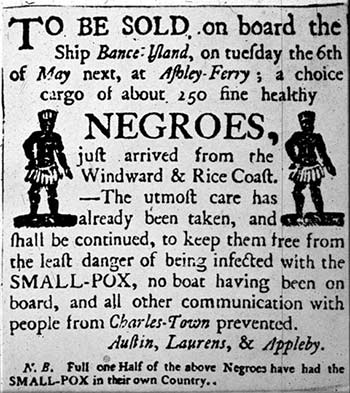 Slavery predates written records and has existed in many cultures. The number of slaves today is higher than at any point in history, remaining as high as 12 million to 27 million, though this is probably the smallest proportion of the world’s population in history. Most are debt slaves, largely in South Asia, who are under debt bondage incurred by lenders, sometimes even for generations. Human trafficking is primarily used for forcing women and children into sex industries.
Slavery predates written records and has existed in many cultures. The number of slaves today is higher than at any point in history, remaining as high as 12 million to 27 million, though this is probably the smallest proportion of the world’s population in history. Most are debt slaves, largely in South Asia, who are under debt bondage incurred by lenders, sometimes even for generations. Human trafficking is primarily used for forcing women and children into sex industries.
 In pre-industrial societies, slaves and their labor were economically extremely important. In modern mechanized societies, there is less need for sheer massive manpower; Norbert Wiener wrote that “mechanical labor has most of the economic properties of slave labor, though… it does not involve the direct demoralizing effects of human cruelty.
http://www.negroartists.com/writings/OHIO%20Born%20in%20Slavery%20Slave%20Narratives%20from%20the%20Federal%20Writers%27%20Project,%201936-1938%20Ohio%20Narratives,%20Volume%20XII.htm
In pre-industrial societies, slaves and their labor were economically extremely important. In modern mechanized societies, there is less need for sheer massive manpower; Norbert Wiener wrote that “mechanical labor has most of the economic properties of slave labor, though… it does not involve the direct demoralizing effects of human cruelty.
http://www.negroartists.com/writings/OHIO%20Born%20in%20Slavery%20Slave%20Narratives%20from%20the%20Federal%20Writers%27%20Project,%201936-1938%20Ohio%20Narratives,%20Volume%20XII.htm


African slaves being freed by the Royal Navy.

(September 11, 1851) “The Christiana Resistance” occurred, a race riot that will become the first recorded open resistance to the Fugitive Slave Law of 1850. A group of Blacks and four White Quakers fought a band of slave catchers attempting to re-enslave escaped slaves in Christiana, Pennsylvania.”
 http://blacklikemoi.com/2012/11/amazing-photographs-of-former-slaves-taken-seventy-years-after-the-emancipation-proclamation/
http://blacklikemoi.com/2012/11/amazing-photographs-of-former-slaves-taken-seventy-years-after-the-emancipation-proclamation/


